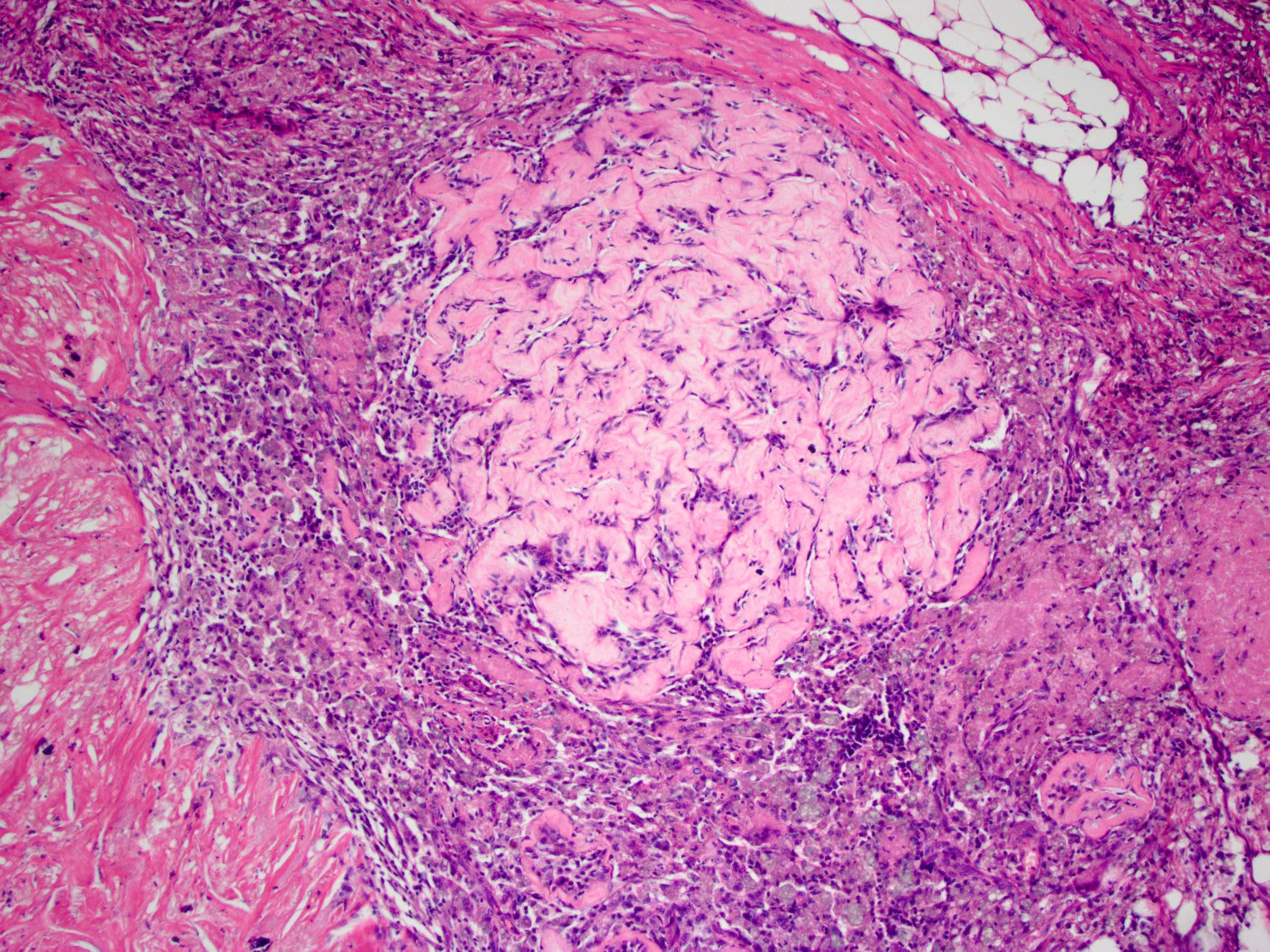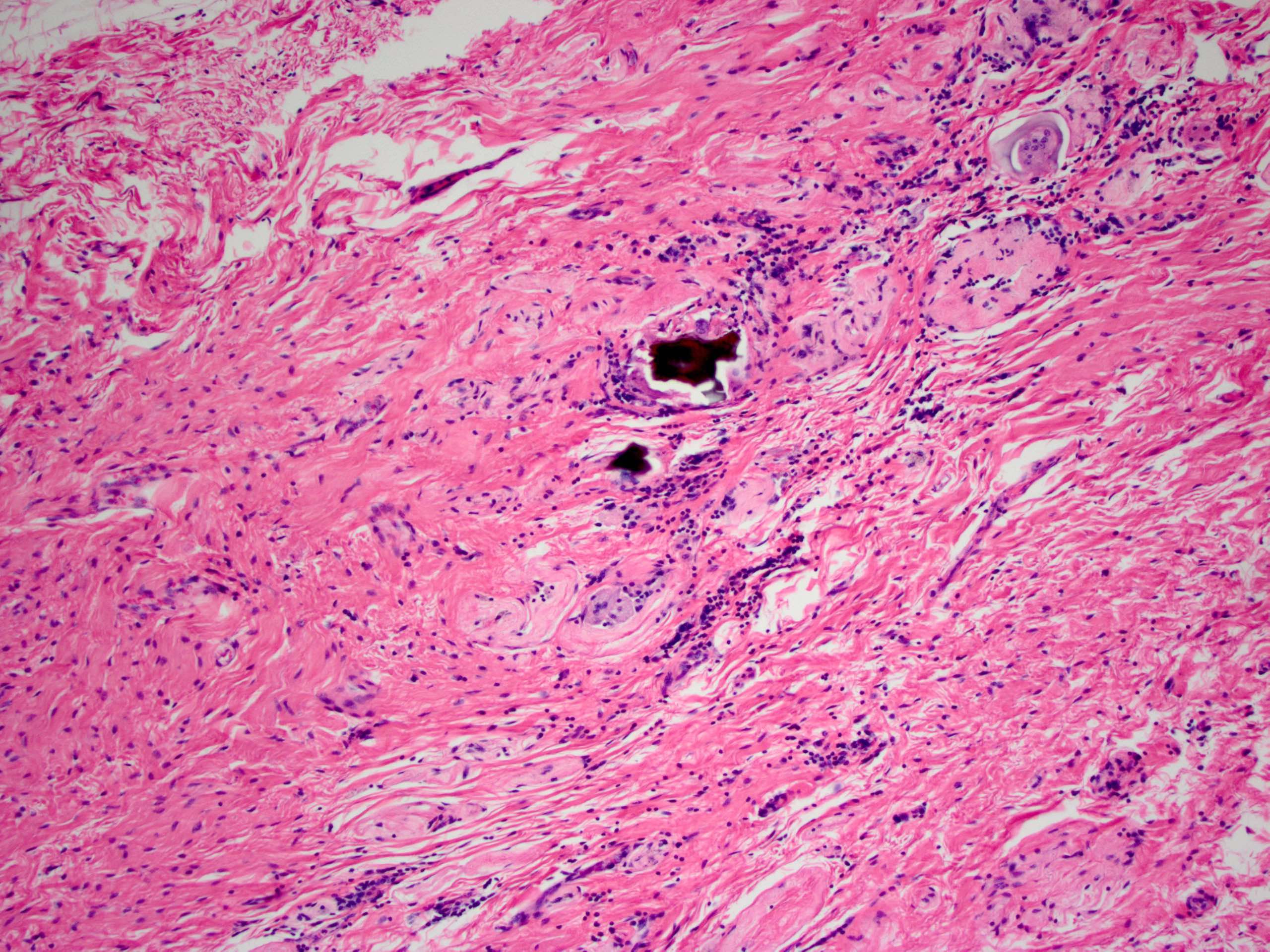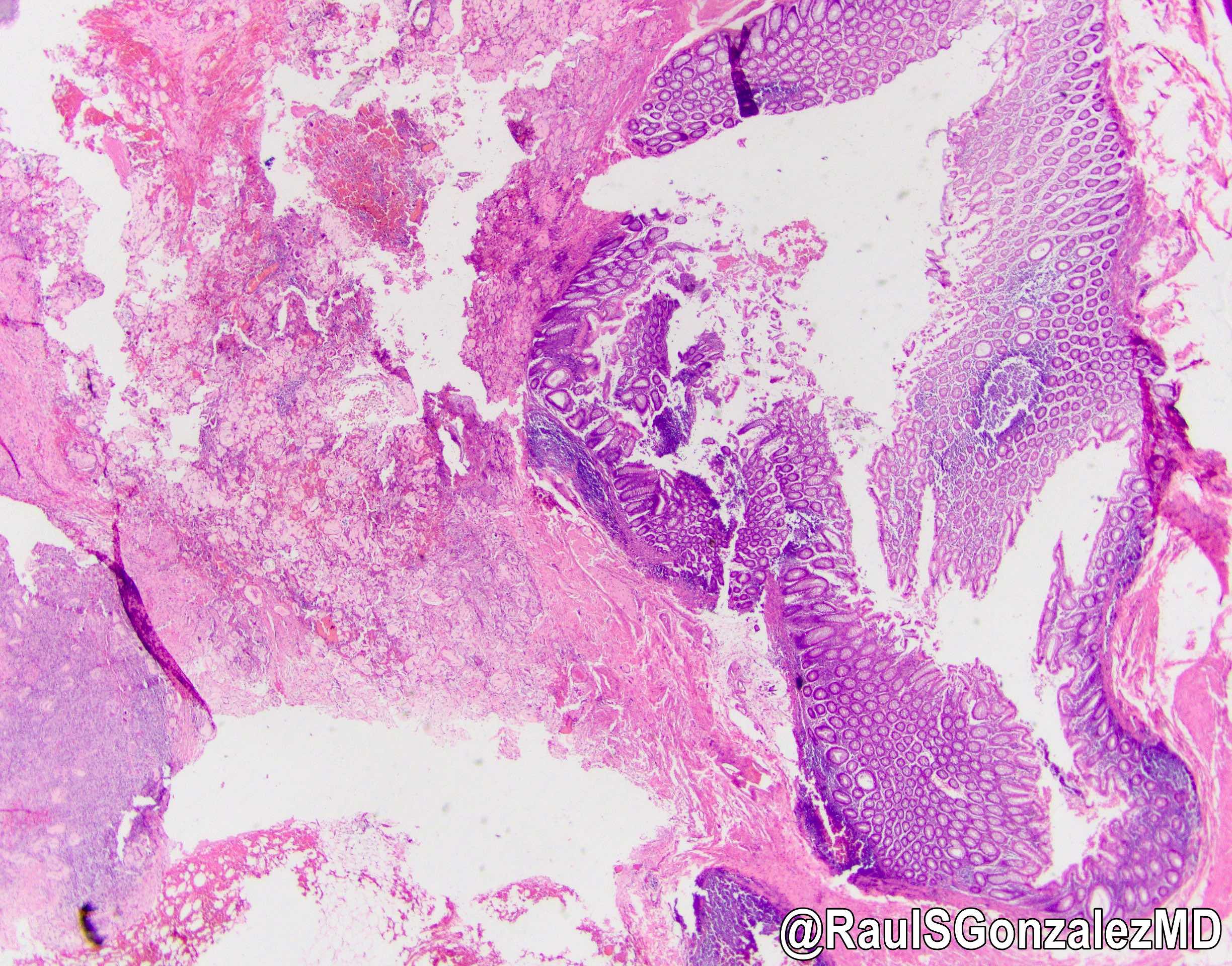Table of Contents
Definition / general | Essential features | Terminology | Epidemiology | Sites | Pathophysiology | Etiology | Clinical features | Case reports | Microscopic (histologic) description | Microscopic (histologic) images | Negative stains | Sample pathology report | Differential diagnosis | Board review style question #1 | Board review style answer #1Cite this page: Gonzalez RS. Pulse granuloma. PathologyOutlines.com website. https://www.pathologyoutlines.com/topic/colonpulsegranuloma.html. Accessed April 24th, 2024.
Definition / general
- Granulomatous reaction to legume material that breaches the colonic mucosa
Essential features
- Reactive process arising from foreign body (food material)
- Usually clinically silent and incidental but may form a mass lesion
- Various microscopic appearances but hyaline rings of pulse material must be present
Terminology
- Pulse is the seed material of legumes (beans, peas, peanuts, etc.)
- It has also been described as hyaline rings
Epidemiology
- Can be seen in up to 10% of intestine segments that have undergone injury (Am J Surg Pathol 2016;40:137)
Sites
- Can occur anywhere in gastrointestinal tract but may occur most commonly in colon
- More commonly recognized in oral cavity, mandible / maxilla and lung
- If colon perforates, pulse can access the abdominal cavity and deposit anywhere within (e.g. ovary)
Pathophysiology
- Granulomatous reaction to foreign material
Etiology
- Most often seen in colon damaged by perforation, diverticulitis, inflammatory bowel disease or malignancy
Clinical features
- Generally an incidental finding but can may manifest as a mass lesion clinically
- Associated with use of tobacco and NSAIDs (Am J Surg Pathol 2015;39:84)
Case reports
- 53 year old man with hard, flat rectal lesion (Histopathology 2016;68:938)
Microscopic (histologic) description
- Hyaline predominant
- More than half of lesion consists of pink hyaline rings / ribbons; other food present; inflammation and fibrosis minimal
- Cellular predominant
- Acute and chronic inflammation and fibrosis
- Relatively less pulse and food material
- Sclerosing mesenteritis-like
- Rarest variant
- Arises in mesentery and resembles sclerosing mesenteritis (inflammation, fibrosis) but pulse focally visible
- Average size is 1.0 cm
Microscopic (histologic) images
Negative stains
Sample pathology report
- Sigmoid colon, resection:
- Diverticulosis with rupture, mural abscess formation and focal pulse granulomas.
Differential diagnosis
- Amyloidosis:
- Positive with Congo red stain
- Inflammation generally not present
- Lifting agent granuloma:
- Hyaline rings not present
- History of polypectomy at site
- Sclerosing mesenteritis:
- For lesions in the mesentery
- Hyaline rings not present
Board review style question #1
Board review style answer #1












